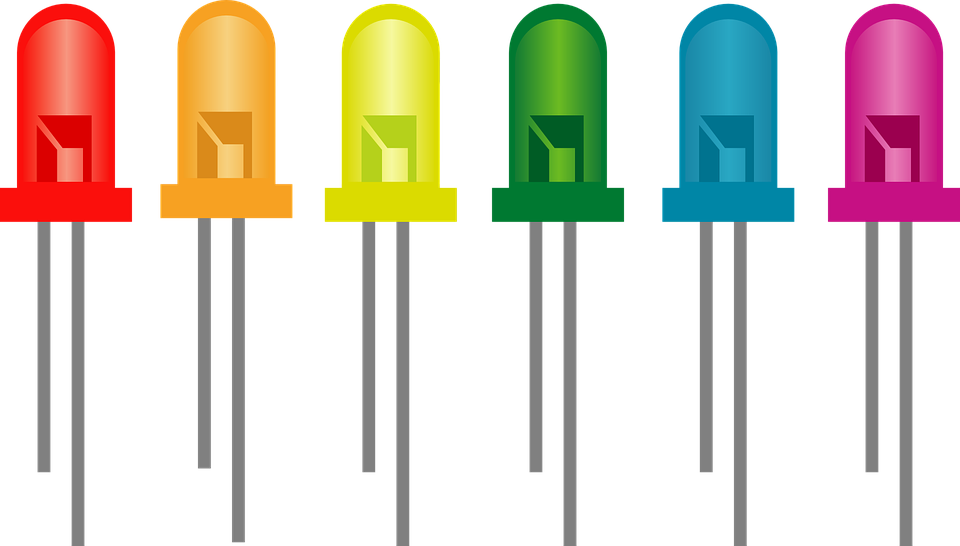|
By Eli Zachary Epperson
Edited by Helena Veronique Rios For more than a decade, the tech giants Samsung and LG have ruled the market for television displays. While the most popular television technology is the familiar liquid-crystal display, or LCD, the organic light-emitting diode, or OLED, display has emerged as a notable competitor [0]. In fact, OLED displays offer a number of advantages over LCDs, leading to superior picture quality. At one time, both Samsung and LG produced OLED televisions. In 2013, however, Samsung ceased production of OLED dislpays, leaving its competitor as the undisputed champion of the OLED TV market [1]. But if OLED displays are actually better than LCDs, why did Samsung run away from it, as if it were a flaming Galaxy Note 7? I will recount the events that brought LG to the forefront of the OLED television market in a following blog post. First, however, the more obvious questions must be addressed: in what ways are OLED displays better than LCDs? What is the underlying science behind the OLED’s operation? And how do you even pronounce “OLED”? This last question does not have a clear answer, as there is no consensus on how the acronym is pronounced. Therefore, readers may take their pick between the two most common pronunciations: “oh-led” and “oh-el-ee-dee.” As for the science behind them, they function in a way that is similar to traditional light-emitting diodes. Traditional LEDs are formed by joining two semiconductor materials, each having different electrical properties due to the addition of other elements or compounds. A good example of these two materials are n-type silicon and p-type silicon, where “n” and “p” stand for “negative” and “positive.” The silicon referred to as “n-type” contains elements or compounds that have more electrons (negative charge carriers) available for chemical bonds than pure silicon does. The other material is called “p-type,” and it contains elements or compounds that have fewer bonding electrons than pure silicon does. In p-type materials, where there could have been an electron there is instead the absence of an electron. This absence is referred to as a hole, and it acts much like a positive charge carrier itself. In other words, when compared to pure silicon, n-type materials have a higher concentration of electrons, while p-type materials have a higher concentration of holes. When the two are placed adjacent to one another, electrons are able to “fill” holes in a process called recombination. Extra energy associated with the recombination process is released as light. In OLEDs, the functions of n-type and p-type materials are played by organic molecules (here “organic” just means containing carbon). A simple OLED consists of the following parts stacked on top of one another: A substrateacts as the supporting layer of the OLED. It can be made of a number of materials like plastic or glass. An anodeis a positively charged electrode through which current enters a device like our OLED stack. It can be thought of as the source of holes in an OLED circuit. A conductive layerconsists of organic molecules that transport the holes from the anode to the emissive layer. An emissive layeris where electrons and holes recombine to generate light. It transports electrons and consists of organic molecules. A cathodeis a negatively charged electrode and acts as the source of electrons in the OLED circuit [2]. When a voltage is applied to the stack, the generated light passes through filters that determine the color of the pixels. When no voltage is applied, the pixel is completely off. Liquid crystal displays make use of a similar light-filtering scheme, but instead use a backlight of LEDs that light the entire screen when the television is on. Rather than turning off pixels by turning off the LEDs of the backlight, LCDs block unwanted light through the process of polarization. Herein lies the difference in picture quality: when an OLED pixel is off, it appears completely black, while an LCD pixel still “leaks” light from its backlight. This means that OLED displays have higher contrast than LCDs (and any other display, for that matter). When it comes to determining picture quality, contrast is the most important factor. The higher the contrast, the sharper the images appear on the screen [3] [4]. While high contrast is the true game-changer, OLED displays offer a number of other advantages. For instance, since there is no light polarization involved, they have a wider viewing angle than LCDs. Because they do not need a backlight, they also draw less power. In addition, they are lighter and thinner than LCDs, and can even be used to make flexible and transparent displays [5]! The advantages of OLEDs are numerous. Unfortunately, because the OLED is a relatively new television display technology, the cost to produce OLED televisions is greater than that associated with the popular LCD, leading to comparatively higher-priced devices. But the cost is not the only factor that caused Samsung to shy away from OLED TVs. The true turning-point in the OLED game, to be discussed in a following blog post, came as a result of an unexpectedly lucrative deal on LG’s part that allowed the company unrestricted access to a cutting-edge type of OLED. Reference: -<https://lcdtvbuyingguide.com/top10.shtml> [0] -<http://www.consumerreports.org/lcd-led-oled-tvs/will-there-be-a-samsung-oled-tv-in-2018-/> [1] -<http://electronics.howstuffworks.com/oled1.htm> [2] -<https://www.cnet.com/news/led-lcd-vs-oled/> [3] -<http://photo.stackexchange.com/questions/23843/what-is-the-difference-between-a-soft-and-sharp-image> [4] -<http://www.oled-info.com/oled-tv> [5]
0 Comments
|
Categories
All
Archives
April 2024
|

